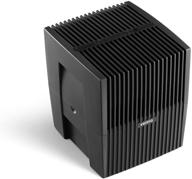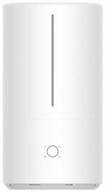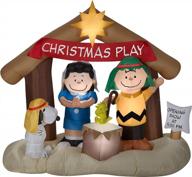Problems with Your Furnace or AC Unit and How to Fix Them
Having problems with your furnace or air conditioner can be frustrating and inconvenient. However, many common HVAC issues can be fixed with some basic troubleshooting and DIY repairs. This guide will cover some of the most frequent furnace and AC problems and provide tips to get your system up and running again.
Furnace Issues
Here are some typical furnace problems and solutions:
- Furnace won't turn on
- Check circuit breaker or fuse box - reset breaker or replace fuse if needed
- Inspect furnace power switch - make sure it's turned on
- Replace faulty furnace switch or thermostat
- Furnace blows cold air
- Dirty air filter - change filter
- Pilot light is out - relight pilot light
- Furnace cycles on and off frequently
- Dirty flame sensor - clean with steel wool
- Faulty thermostat - consider replacing
AC Troubleshooting
Some common AC problems and fixes:
| Problem | Solution |
|---|---|
| AC not turning on | Check power supply, fuse, reset breaker. Check AC controls. |
| AC blowing warm air | Clean/replace air filter. Refrigerant may be low - call tech. |
| AC freezing up | Dirty air filter or low refrigerant - call tech. |
For both furnace and AC repairs, remember to turn off power supply before attempting any DIY fix. Refer to your model's manual as needed. Calling an HVAC technician is recommended for complex issues or safety concerns.
With some basic maintenance and troubleshooting, you can resolve many furnace and AC problems yourself. But don't hesitate to call a professional if you have any doubts or if issues persist after repairs.
Choosing the Right Air Filter for Your Home
Installing the proper air filter in your home's HVAC system is important for indoor air quality and system performance. Selecting the right filter type and size for your air handler or furnace can improve efficiency and reduce strain on your unit. Here are some tips for choosing the best air filter for your home.
Types of Air Filters
- PLEATED - Made of cotton/polyester blend media, removes large particles. Should be replaced every 1-3 months. Budget friendly option.
- EXTENDED SURFACE - Contains more filter material to capture more particles. Replace every 3-6 months. Good for allergy sufferers.
- ELECTROSTATIC - Contains a static charge to attract and trap particles. Filters small allergens. Replace every 6-12 months.
- WASHABLE/REUSEABLE - Can be cleaned and reused. Removes large particles only. Should be washed every 1-2 months.
Factors to Consider
| Factor | Details |
|---|---|
| MERV Rating | MERV ratings indicate filter effectiveness. MERV 8-12 are typical for residential use. |
| Particle Size | Greater filter density traps smaller particles like smoke, dust, pollen. |
| Air Flow Resistance | Denser filters can restrict airflow. Balance filtration with proper air circulation. |
Measuring for the Right Size
Air filters are sized in inches for each side of the filter frame. Common residential sizes:
- 14x25x1
- 16x25x1
- 20x25x1
Use a tape measure to measure the length and width of your current filter to find the matching size. Most filters are 1" thick.
When to Replace Air Filters
Check your filter monthly and replace per manufacturer recommendations. If filter looks heavily covered in dust/debris, replace sooner. Signs your air filter needs replacement:
- Reduced airflow from vents
- Decreased energy efficiency
- Excess dust/dirt in home
- HVAC system running excessively
Replacing air filters at optimal intervals will maintain proper HVAC operation, improve indoor air quality, and may reduce energy costs.
DIY Repairs for Common Issues with Heat Pumps
Heat pumps provide an energy-efficient heating and cooling solution for many homes. Like all HVAC systems, they can occasionally develop issues. Many common heat pump problems can be resolved with simple DIY troubleshooting and repairs.
No Power
- Check circuit breaker and reset if tripped
- Test voltage at disconnect box using multimeter
- Inspect fuses and replace any blown fuses
- Check control board for damage; may need replacement
Not Switching Between Heating and Cooling
- Check thermostat settings
- Inspect control board; if faulty, will need professional replacement
- Test control panel wiring for loose connections
- Clean contactor contacts if dirty; replace contactor if worn out
Frozen Outdoor Unit
- Turn off power and use hair dryer to thaw icy coils
- Check refrigerant charge; may need to be recharged by technician
- Improve insulation around refrigerant lines
Noisy Operation
| Noise | Solution |
|---|---|
| Rattling | Tighten loose fan blade setscrews or motor mounts |
| Vibration | Adjust unit so it sits level or replace support pads |
| Hissing | May indicate refrigerant leak; call technician |
When doing any DIY heat pump repairs:
- Always turn off power before working on unit
- Be cautious of sharp coils and fan blades
- Have a professional handle any refrigerant or electrical issues
With proper maintenance and by addressing small issues early, you can extend the life of your heat pump and keep it running efficiently.
Improving Efficiency and Reducing Energy Costs
High utility bills putting a strain on your budget? Luckily, there are several ways you can improve the efficiency of your home's heating, ventilation, and air conditioning (HVAC) system and reduce associated energy costs.
Conduct Regular Maintenance
- Replace air filters monthly
- Have HVAC system tuned-up yearly
- Clear debris from outdoor AC unit
- Seal and insulate ductwork
Adjust Thermostat Settings
Program your thermostat for:
- 68°-70° F for heating
- 78°-80° F for cooling
- Lower temps when away or asleep
Upgrade Old HVAC Equipment
| Component | Benefits |
|---|---|
| Furnace | High-efficiency models use less energy to produce heat |
| AC unit | Newer units are more eco-friendly with better performance |
| Thermostat | Smart thermostats optimize heating and cooling cycles |
Sealing Air Leaks
Seal gaps and cracks around:
- Windows and doors
- Wiring and plumbing penetrations
- Attic hatches
- Fireplaces and ductwork
Increase Insulation
Add insulation to attic and walls to improve efficiency. Recommended levels:
- Attic insulation - R-49
- Wall insulation - R-13 to R-21
With some DIY improvements and upgraded HVAC equipment, you can make your home more efficient and take control of energy costs.
Preventative Maintenance to Extend the Life of Your HVAC System
Performing regular preventative maintenance on your HVAC system is crucial for optimizing performance and lifespan. Implementing a few simple maintenance practices can add years to your HVAC system.
Change Air Filters
Clogged air filters force your HVAC system to work harder to circulate air. This leads to strain on internal components. Replacing air filters every 1-3 months helps keep your system running efficiently.
Clean and Inspect Components
Wipe down exposed HVAC parts like heat exchangers, evaporator coils, and fan blades to prevent buildup of dirt and debris. Look for signs of wear like cracks or corrosion. Tighten loose connections or frayed wiring.
Clear Condensate Drains
Clogged drains can cause water damage or backups. Pour vinegar or baking soda solution into drains monthly to clear out algae, mold, and grime.
Check Refrigerant Levels
Low refrigerant reduces cooling efficiency. Most issues require professional service, but you can visually inspect A/C unit for refrigerant leaks indicated by oil residue.
Replace Worn Parts
Parts like fan belts, capacitors, contactors, etc. wear out over time. Schedule professional replacement of any components showing signs of failure.
| Part | Life Expectancy |
|---|---|
| Air filters | 1-3 months |
| Fan motors | 10-15 years |
| Compressor | 8-12 years |
Annual Tune-Ups
HVAC professionals thoroughly inspect systems and make repairs/adjustments to improve efficiency. Tune-ups should be scheduled before extreme seasons.
By dedicating a little time each month to HVAC maintenance, you can add years of life to your system. Your efforts will be rewarded with lower energy bills and reduced need for repairs.
Troubleshooting Comfort Issues: Temperature, Humidity, Air Circulation
Having problems achieving comfortable temperature, humidity, and airflow in your home? Pinpointing and resolving these common HVAC comfort issues is possible with some handy troubleshooting.
Temperature Troubleshooting
- Adjust thermostat calibration if temperature is off
- Check thermostat batteries if failing to respond
- Examine HVAC filters and replace if dirty
- Ensure vents aren't obstructed by furniture or dust
- Have an HVAC technician inspect unit and refrigerant level
Humidity Issues
| Problem | Solution |
|---|---|
| Too humid in summer | Reduce indoor moisture sources; run A/C more |
| Too dry in winter | Use humidifier; check furnace humidifier pad |
Improving Air Circulation
- Balance air flow between vents by adjusting dampers
- Replace clogged air filters
- Ensure vents are fully open and unobstructed
- Upgrade HVAC blower motor if weak airflow
- Seal leaky ductwork allowing air loss
Tips for identifying issues:
- Use thermostat data to analyze temperature patterns
- Look for condensation/mold indicating humidity problems
- Test vent air flow with tissue paper or anemometer
Solving home comfort issues requires some analysis to pinpoint the specific problem. With focused troubleshooting, you can zero in on the issue and take action to restore proper temperature, humidity, and airflow in your home.
Safety Tips for DIY Repairs and Professional Installations
When tackling HVAC repairs or hiring contractors for installations, safety should be the top priority. Taking proper precautions will keep both DIYers and professionals safe.
DIY Repair Safety
- Turn off power at the breaker before servicing HVAC equipment
- Review manufacturer instructions for proper procedures
- Wear safety glasses and gloves when handling parts
- Have an assistant present for electrical testing and ladder work
- Use insulated tools and avoid contact with live circuits
Professional Installation Tips
| For Homeowners | For Contractors |
|---|---|
| Ask for proper credentials and licensing | Follow all local codes and permit requirements |
| Ensure electrical system can handle new HVAC unit | Use gloves, glasses, and other safety gear |
| Keep children/pets away from work area | Set up cones and barricades around work zones |
Avoiding Injury
- Use caution when working on ladders or rooftops
- Have a partner to help with heavy lifting
- Beware of loose power cords and sharp sheet metal
- Watch for leaks when handling refrigerant lines
Preventing HVAC Damage
- Shut down HVAC system before service to prevent equipment damage
- Avoid spilling water or debris into ductwork
- Use drop cloths when working overhead
- Clean up all tools, leftover parts, and trash after project
By placing safety first and taking the proper cautions, both DIYers and professionals can complete HVAC work safely and achieve high-quality outcomes.
Similar products
Find The Best Air Purifier Filters For Your Home
Air purifiers are an excellent way to improve the air quality in your home. Here are some of the best air purifier filters for your home based on expert reviews and testing:
- Blueair Blue Pure 331i - Best Overall Air Purifier
- Levoit Core 400S - Best Overall Air Purifier, Runner-Up
- Coway Airmega AP-1512HH Mighty - Our Pick
- Macro Pro - Best Value Air Purifier
- Alen BreatheSmart 75i Pure - Top-Notch at Capturing and Removing Dust and Smoke
- Future Way Replacement Filter Compatible with LEVOIT LV-H128 - Top-Class Performance
- VEVA 8000 Air Purifier - Favorite Budget Pick
These air purifiers use mechanical filters with a dense web of fine fibers that trap particles from the air as it is pushed through by a fan. True HEPA filters use a very fine mesh certified to capture 99.97% of particles measuring at least 0.3 microns (and in some cases down to 0.1 microns) in diameter. The best cleaning power comes from a True HEPA filter.
How Often Should Air Purifier Filters Be Replaced?
The frequency of replacing air purifier filters can vary depending on the specific filter, air quality, and environmental factors. Here are some general guidelines:
- Replaceable HEPA filters: Every 6-12 months
- Carbon pre-filters: Every 3 months
- True HEPA filters: Every 6 months to 1 year
- Electrostatic and activated carbon filters: Every 6 months to 1 year
- UV-C bulbs: Annually
- HEPA or Super HEPA filters: Every 2-3 years
- Smart air purifiers: HEPA filters can last 6 months to 1 year, while some people replace them every 1-3 months
It's important to note that these are general recommendations, and it's also essential to rely on your own discretion. If you notice a decline in air quality, bad odors, or increased allergy or asthma symptoms, it may be necessary to change the filters more frequently. Additionally, some air purifiers have built-in filter replacement indicators to help you keep track of when the filters are dirty.
Remember, maintaining and replacing air purifier filters on schedule is crucial to ensure optimal performance and clean air in your home or office.
Can I Clean And Reuse My Air Purifier Filter
The answer to whether air purifier filters can be cleaned and reused depends on the type of filter. Here are some general guidelines:
Filters that can be cleaned and reused:
Filters that cannot be cleaned and reused:
It's important to note that even if a filter can be cleaned, it may not be as effective as a new filter. Reusing filters can also put a strain on the motor of your air purifier or vacuum. If you do decide to clean a filter, make sure to follow the manufacturer's instructions carefully. For example, some filters can be rinsed with warm water, while others may require a damp rag.
In general, it's recommended to replace air purifier filters on schedule to ensure optimal performance and clean air in your home or office.
















